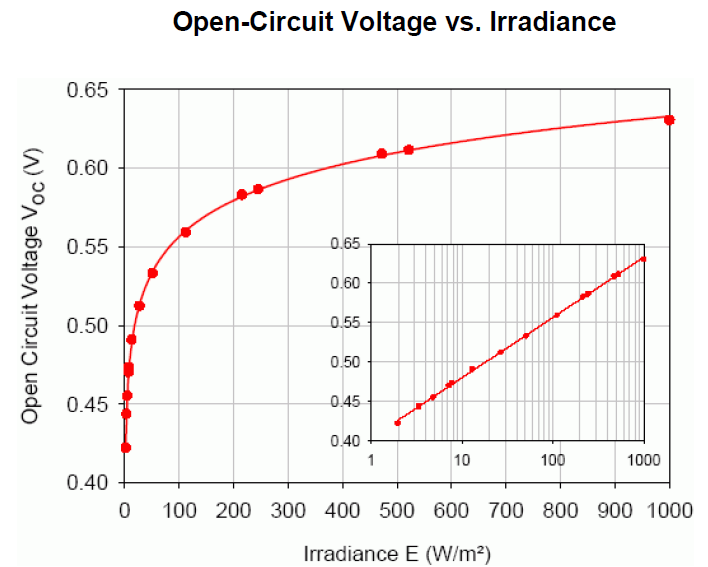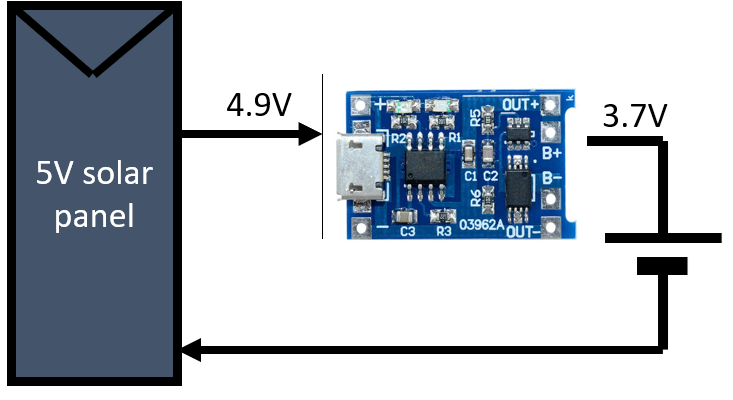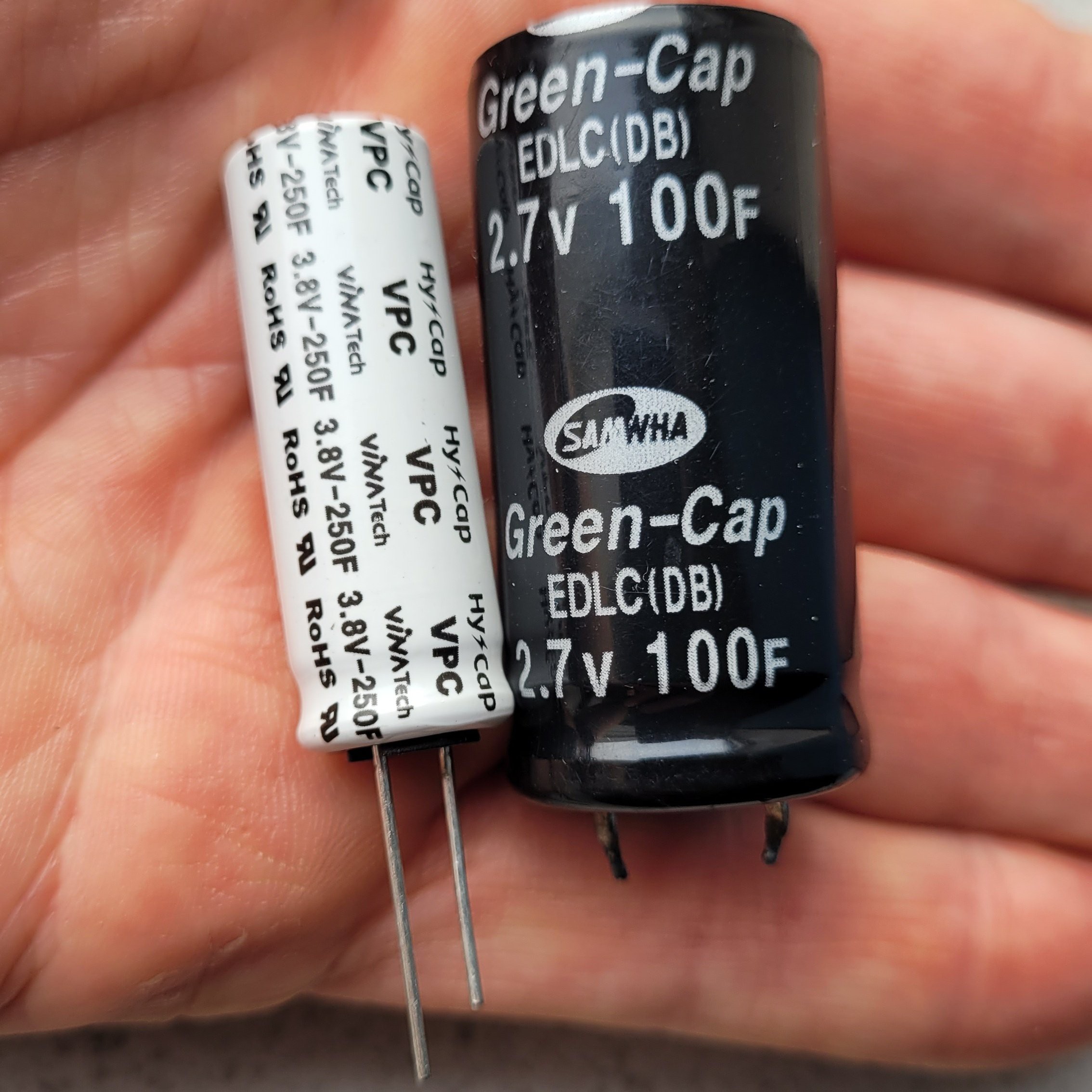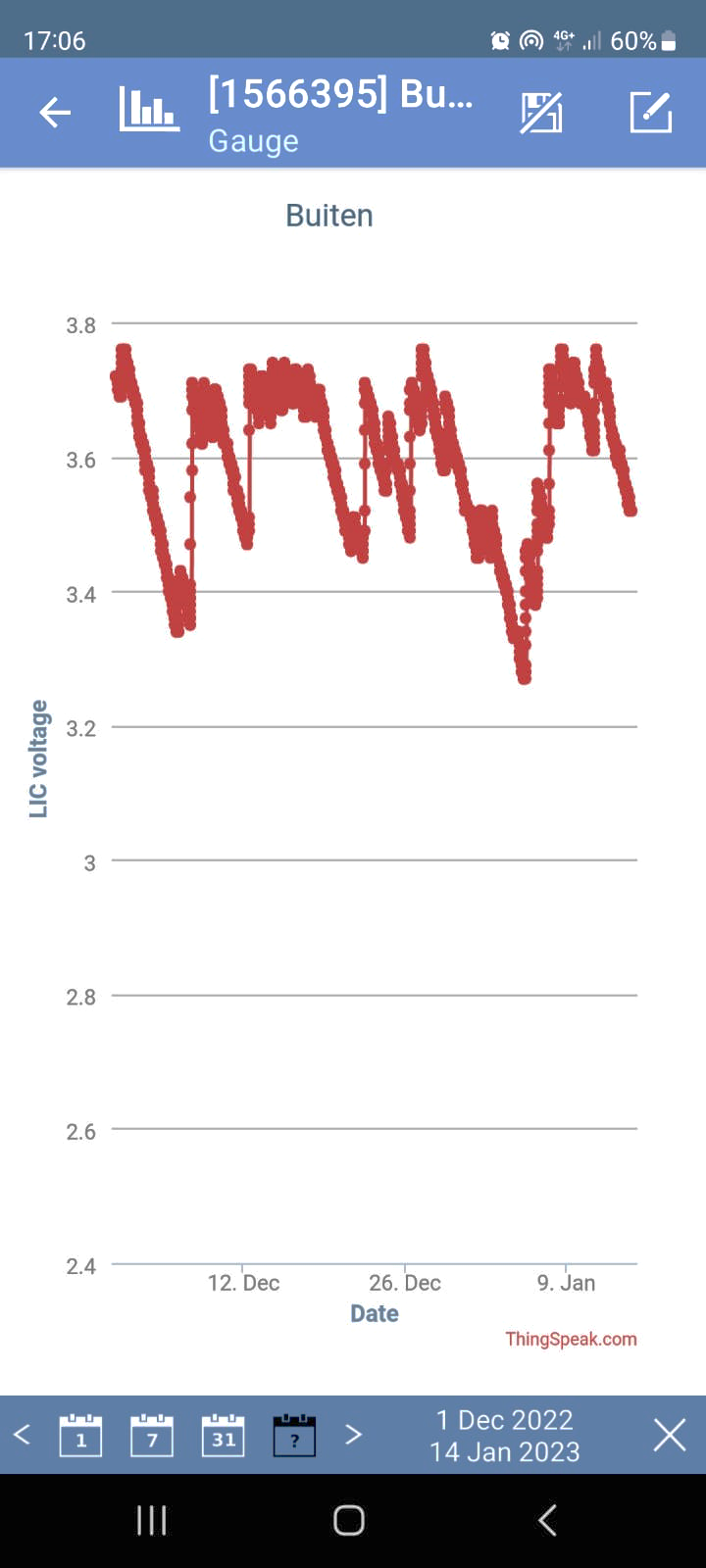In January 2023 I did a short presentation in the local community. Now I share it online too.
Solar panel, IV and PV curve
Solar panels consist of individual cells, that are 0.5V nominally. A 5V solar panel consists of 10 cells in series.

The blue line is the IV curve of a solar cell, the current versus voltage. Voc is the open circuit voltage, at no load, typically 0.63V. On top left is the short circuit current Isc. The red line is the PV curve, which is power versus voltage. Most power Vmp is generated at 0.5V (80%) of the Voc (0.63V).

Effect of irradiance on Vmp
The maximum power voltage is not constant. These are IV curves at different light intensities. It shows at low light levels the Vmp is lower, at 70%. It also shows that the short circuit current is linear with irradiance.

Effect of temperature on Vmp
Below chart shows at high temperature Vmp can be 20% lower. So Vmp depends on irradiance and temperature.

Maximum power point methods
- MPPT is maximum power point tracking, it actively finds the peak by constantly adjusting the load, this is the most efficient and complex method
- MPPC is maximum power point control, it regularly measures the open circuit voltage and loads the solar panel to a fixed percentage (80%) of that
- Fixed voltage is the simplest method, it simply loads the solar panel to a fixed voltage, disregarding the effect of irradiance and temperature

Relative light levels
Bright sunlight is 500-1000 W/m2. Only at the equator the 1000W/m2 is reached. Under the clouds the irradiance is 50-200 W/m2, which is 10 times less. And indoors it is 2-15 W/m2, another ten times less. So indoors there is 100 times energy to harvest than outdoors.

Effect of irradiance on Voc
At very low light levels (20W/m2) Voc already exceeds 0.5V per cell.

Light spectral distribution
- Daylight has a very wide spectrum. There is a lot of energy in the IR part.
- LED and fluorescent light have narrow light spectra
- From artificial light (indoors) there is 200-500 times less energy to harvest than outdoors

So if your application sometimes see direct sunlight 1 hour per day it harvests 100 times more than in the other 23 hours.
Advanced energy harvesting chips for low power IoT applications
Chips like AEM10941, BQ25570, SPV1050 are all swithing converters and have a similar efficiency 80-90%, They all do MPPC and work great under low light conditions. AEM10941 is most versatile and requires the least external components. They are all expensive in small quantities 4-6 EUR per chip, plus it needs an inductor.

Tested cheap linear USB Li-ion battery charge IC
A few years ago I tested a few cheap linear battery chargers for Lithium Ion Battery on my rooftop terrace.

- MCP73831 0.40 euro
- TP4056 0.25 euro
- others....
The measured efficiency was 70-75%, so not bad at all. I selected TP4056 as the winner because of large input voltage range and lowest price. Why was it so efficient?

Because the 5V solar panel worked close to Vmp. The energy is lost because of the drop out voltage over the linear charger Conclusion: for outdoor applications you don’t need advanced MPPC. A TP4056 plus a 5V solar panel is more economic and pretty efficient. It is better to spent your money on a larger solar panel than on a MPPC energy harvesting chip
Batteries versus capacitors
I compared Lithium Ion Batteries (LIB) to Lithium Ion Capacitors and supercapacitors. LIBs have highest energy density, but they have limited charging cycles so after few years they wear out like batteries in smartphones. In addition they are dangerous, they need protection circuits to stay safe, they have dangerous chemicals and need to be disposed with chemical waste and they have a narrow temperature range, at freezing temperatures capacity is severely reduced. A classic alternative is a supercapacitor, they have unlimited charge cycles, they don’t degrade but their energy density is 40 times less. Lithium Ion Capacitors (LICs) are new. They are something in between supercapacitors and batteries, they have 6 times higher energy density than supercapacitors but don’t have the disadvantages of batteries. Recently the price has dropped and in qty1000 it is less than 2 euro for a 250F 3.8V Lithium Ion Capacitor. A 250F LIC has the size of an AA battery and the capacity compares to a 90mAh battery, so it is a useful capacitance for a low power sensor application.

Below picture compares a 250F LIC to a 100F supercapacitor

New developments are LICs of 1200F in 18650 form factor and in pouch formfactor.


Design of an efficient and cheap linear charging circuit for a 3.8V Lithium Ion Capacitor
We learned that a circuit consisting of a 5V solar panel, a linear charger and a battery is efficient and very economic. Here's the block diagram of such a circuit.

A low quiescent 4V Low Drop Out (LDO) voltage regulatorand a diode charge the LIC to 3.8V. A diode the diode prevents discharging the LIC into the solar panel at night. This circuit is very efficient because of low voltage drop over LDO (0.1V) and diode (0.2V) and because the 5V solar panel operates close to Vmp. A field test at home showed that the circuit also works well under low light condition 100W/m2.

Summary
- Indoors there is 200-500 times less energy than outdoors
- Linear chargers are cheap and can be pretty efficient
- For outdoors it is better to to buy a larger solar panel than an expensive MPPC harvesting chip
- Life time and temperature range of Lithium Ion Capacitors is better than batteries
- A very cheap and efficient linear charge circuit was designed for capacitor
 Jasper Sikken
Jasper Sikken
Discussions
Become a Hackaday.io Member
Create an account to leave a comment. Already have an account? Log In.